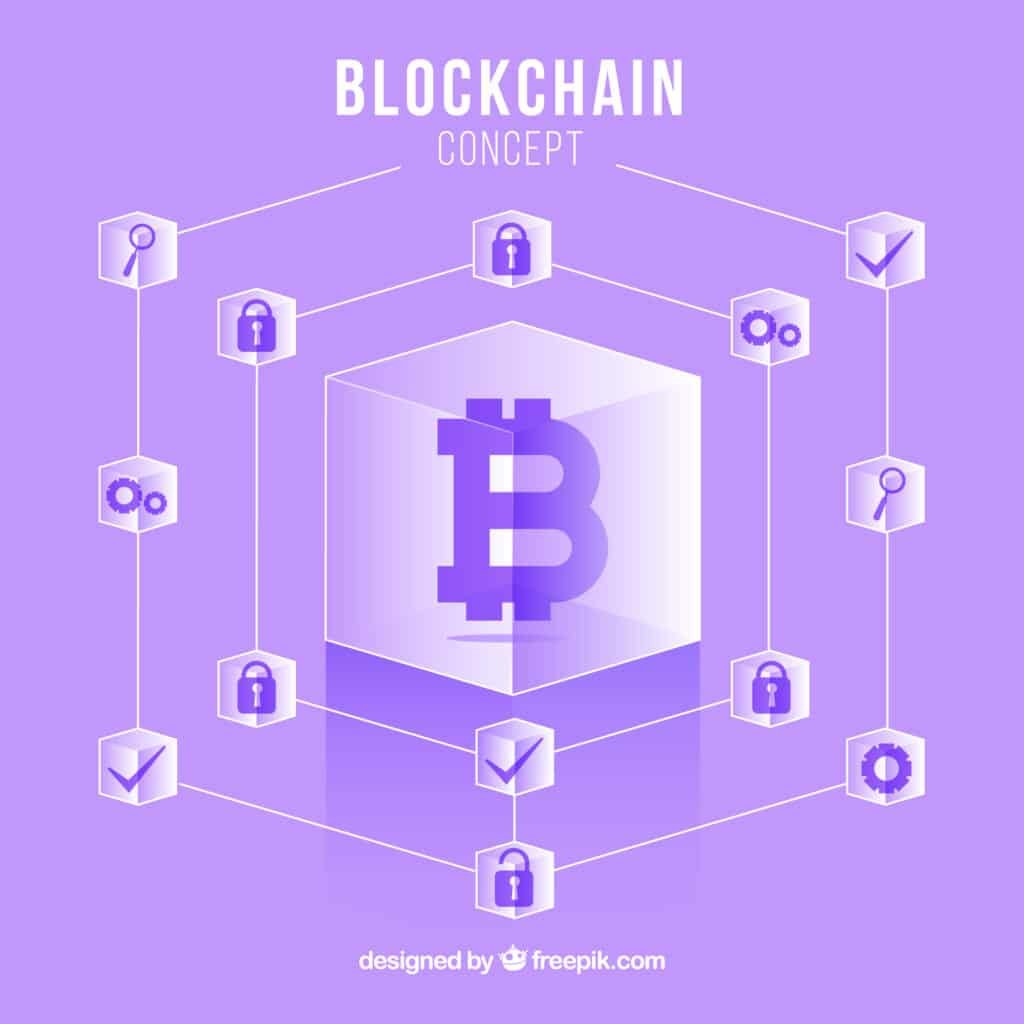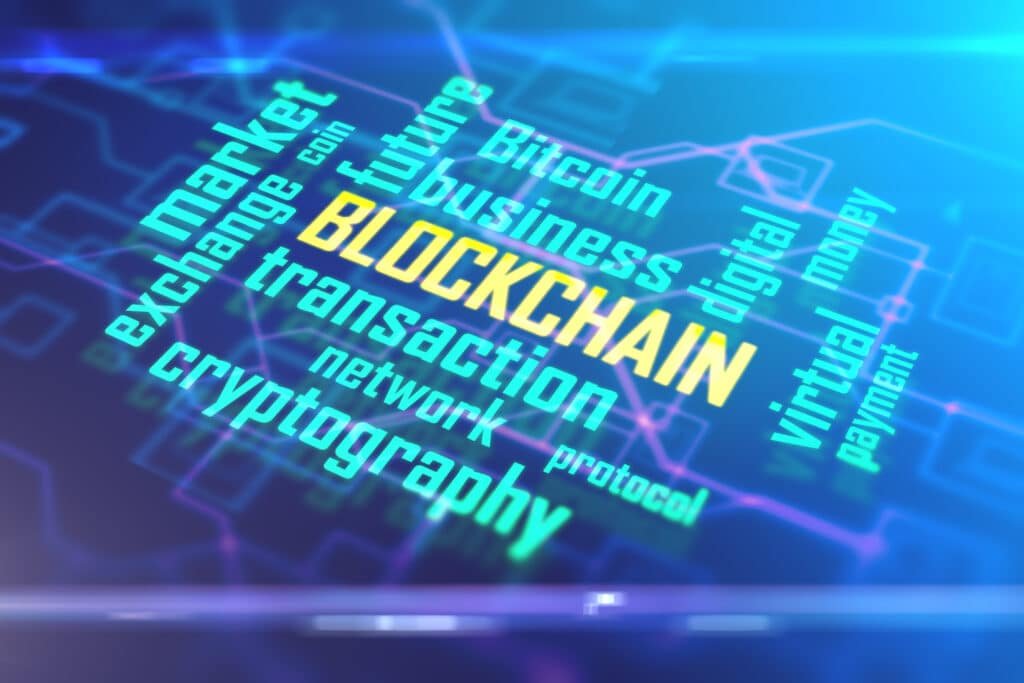Scalability and Solana (SOL)

In a nutshell, Solana is a blockchain platform that enables the development of high-speed, decentralized applications and crypto-currencies by utilizing a unique combination of innovations that address the scalability problems that plagued previous blockchain networks, such as Ethereum.
Solana Key Features

Firstly, Proof of History (PoH) is a cryptographic clock that timestamps events on the blockchain. As a result, Solana’s PoH process helps to order transactions more efficiently and enables parallel processing, improving the network’s scalability without compromising its security.Solana’s consensus mechanism, Tower BFT (T-BFT), combines the security of Byzantine Fault Tolerance (BFT) with the efficiency of Proof of Stake (PoS) to provide a robust consensus system. The network is able to process thousands of transactions per second due to its fast finality and high throughput, resulting in a network that is capable of processing thousands of transactions simultaneously.
Using parallel processing
It is necessary to keep in mind that the Solana network utilizes a unique approach to parallel processing called “Sea Level,” which allows it to process multiple transactions at the same time, further increasing the network’s scalability and performance.
Transaction fees are low
The fact that Solana offers low transaction fees due to its high throughput and efficient architecture makes it an attractive choice for developers and users to work with.
Application Cases
Due to its high throughput and low latency, Solana has become increasingly popular in the DeFi space due to its high throughput and low latency. A number of projects, such as Serum, a decentralized exchange (DEX), and Raydium Solana’s scalability makes it well-suited for NFT marketplaces and gaming applications that require non-fungible tokens (NFTs). It has become more affordable and easy for creators to mint, buy, and sell NFTs with minimal fees and fast transaction times with the advent of projects such as Soluble and SolSea.
Application Web3
Due to Solana’s high throughput and low latency, it provides a perfect platform for building Web3 applications that require real-time interaction and data processing, which make it an ideal platform for building Web3 applications. As a result, developers can leverage Solana’s infrastructure to create decentralized social networks, content platforms, and a variety of other applications.
Challenges and prospects
In spite of its promising features, Solana does face a number of challenges, such as network decentralization and competition from other blockchain platforms that offer similar services. While these issues are not being addressed actively by the Solana community, initiatives such as the development of a decentralized governance system and ecosystem development are in progress.
As a result of the foregoing, Solana represents a significant advancement in the realm of digital currencies, offering unparalleled scalability, speed, and cost-effectiveness in the field of digital currencies. Solana is poised to play a crucial role in driving the next generation of decentralized applications and financial services in the Blockchain ecosystem, as the ecosystem continues to evolve.
A Growing Ecosystem
With its scalable infrastructure and developer-friendly environment, Solana’s ecosystem has experienced rapid growth in recent years. There have been a number of projects spanning Decentralized Finance (DeFi), non-fungible tokens (NFTs), gaming, as well as Web3 applications that have been developed on the Solana blockchain, contributing to its growth.
Solana has emerged as a hub for decentralized finance (DeFi) innovation, with projects such as Serum, Raydium, and Mango Markets gaining momentum in the DeFi area. With Solana’s high throughput and low transaction fees, these platforms are able to offer a wide range of financial services, including decentralized exchanges, automated market makers, lending, and borrowing protocols, all powered by Solana’s high throughput and low transaction fees.
NFTs (Non-Fungible Tokens)

It is because of Solana’s scalability that it makes it an attractive platform for the development of NFT marketplaces and gaming applications. The popularity of NFT projects such as Solible, SolSea, and Solanart can be attributed to the fact that they offer creators and users fast, efficient, and cost-effective methods of trading and minting NFTs.
Metaverse Gaming
Solana is being deployed by a growing number of gaming projects in order to benefit from its low latency and high throughput. Games like Star Atlas and Degenerate Ape Academy are being built on Solana, offering immersive gaming experiences and virtual economies powered by blockchain technology.
Websites
In addition to supporting real-time interactions and data processing, the Solana architecture is ideal for building decentralized applications (dApps). With Solana’s infrastructure, developers are building decentralized social networks, marketplaces, and content platforms, enabling a new type of digital economy participation and ownership.
Adoption Potential
Considering Solana’s scalability, speed and cost-effectiveness, it appears to be a very strong contender for wide-scale adoption across a variety of sectors. It is important to note that there are several factors that are contributing to the potential for Solana to be adopted on a broader scale, including:
Embracing Enterprise
The high throughput and low transaction fees of Solana make it an attractive option for enterprises seeking to implement blockchain solutions for supply chain management, identity verification, and other areas of business that require scalability and efficiency in their operations.
An Interoperable System
With Solana’s compatibility with Ethereum Virtual Machine (EVM), developers can migrate existing Ethereum-based projects to the Solana blockchain. Ethereum.
Wide Reach
Because Solana is a decentralized solution, and has a global community, it can be used and developed by users and developers from all over the world, making it possible for everyone to get involved in the digital economy regardless of location or traditional financial infrastructure.
Institutional Interest
A growing institutional interest in digital assets and blockchain technology could lead to an increase in adoption of Solana as a platform for asset tokenization, investment products, and financial services tailored to institutional investors, which could lead to increased adoption of Solana.
Factors To Consider
There are several advantages to using Solana, but it also faces a number of challenges and considerations that could negatively impact its adoption and growth:
Distributed Networks
The challenge for Solana is maintaining high throughput while maintaining decentralization and security at the same time. Efforts should be made to decentralize network validators and improve governance mechanisms in order to mitigate the risks associated with centralization.
Competitors

The main competition that Solana faces is with other blockchain platforms, including Ethereum, Binance Smart Chain, and others, which also provide scalability and developer ecosystems. This means that maintaining a competitive edge and differentiation is crucial for Solana’s continued success.
Regulations
A lack of clarity in regulatory guidelines and compliance requirements could affect Solana’s adoption, particularly in the DeFi space. Clarifying regulatory guidelines and compliance requirements is essential for fostering trust and confidence among stakeholders and customers.
Defining scalability
To maintain performance and support growing demand, scalability and network stability have become increasingly important to the success of Solana. In order to support growing demand and keep performance high, there is a need for continuous improvements in the protocol, resource management, and infrastructure upgrade.
In my opinion, Solana has demonstrated its potential to transform various industries and to drive broader adoption of blockchain technology on a global scale. In order to shape the future of decentralized finance, digital assets, and Web3 applications, Solana is well-placed to play a pivotal role in shaping the future of decentralized finance, digital assets, and Web3 applications with its scalable infrastructure, vibrant ecosystem, and innovative projects.
However, addressing the challenges associated with network decentralization, competition, regulatory compliance, and scalability will be pivotal to realizing Solana’s full potential and ensuring that Solana achieves sustainable growth over the long run.It would be good to delve deeper into Solana’s technological innovations, community-led initiatives, and its potential impact on the broader ecosystem of cryptocurrencies in the coming months.
Sharding dynamically
Using Solana’s dynamic sharding approach, the network divides itself into smaller groups of nodes called shards, which allows the network to automatically process transactions in parallel, thus maximizing throughput and scaling as the network grows. The dynamic sharding of Solana guarantees that even in the face of increasing transaction loads, Solana can maintain its high performance.
The optimists
Optimistic Rollups is a layer 2 scaling solution that allows Solana to gather transactions off-chain and submit them to the main chain for validation periodically, allowing Solana to achieve both performance and scalability at the same time. This will be achieved by reducing congestion on the main chain, lowering transaction costs, and improving overall network efficiency while maintaining the security as well as the decentralization of the network at the same time, this helps to reduce congestion on the main chain.
The Wormhole
Solana’s Wormhole protocol allows seamless interoperability between the Solana blockchain and other blockchain networks like Ethereum through its Wormhole protocol. With it, assets can be securely transferred between chains in an efficient and secure manner, allowing for cross-chain DeFi applications and asset portability to become a reality.
TAPI
As a tokenization platform, Solana provides developers with a robust and high-performance platform that enables them to create customized tokens, digital assets, and smart contracts in a highly efficient and low-latency manner. In addition to tokenized securities and NFTs, decentralized exchanges, and tokenized real-world assets, this allows for a wide range of use cases.
Stiftung Solana

There is a non-profit organization known as the Solana Foundation which provides grants, funding, and support to developers, projects, and initiatives that contribute to the advancement of the Solana ecosystem, which will be used to support the rapid adoption of the technology. community.
Summer Hackathons
To encourage innovation and collaboration among the community, Solana hosts regular hackathons and developer competitions referred to as Solana Seasons. To create innovative applications and tools on the Solana blockchain, developers, entrepreneurs, and enthusiasts are brought together at these events.
Support Programs
Among the various developer support programs offered by Solana, developers can take advantage of technical workshops, educational resources, and mentorship programs to help them get started with building on the platform. It is the aim of these programs to eliminate barriers to entry for developers and enable them to create impactful projects on the Solana platform.
Local Governance
As part of the Solana governance model, community members have the opportunity to participate in decision making processes and protocol upgrades through on-chain governance mechanisms. Solana facilitates a sense of ownership and decentralization within its community, allowing for stakeholders to collaborate in the development of the network in the future.
The Crypto Economy

In defining blockchain scalability, Solana’s performance benchmarks challenge traditional notions of transaction throughput and confirmation times, challenging the status quo. The fact that it has been able to achieve a high throughput and low latency rate has prompted other blockchain projects to prioritize their development roadmaps with scalability and efficiency in mind.
A Growing Ecosystem
There are several developers, projects, and investors from around the world who have been drawn to Solana due to its vibrant and rapidly growing ecosystem. The scalability of the platform, as well as its low transaction fees, make it an ideal platform for developing decentralized applications and launching innovative projects that span many different industries.
Innovate with DeFi

In order to enable the creation of decentralized exchanges, lending platforms, liquidity protocols, and synthetic asset platforms on the Solana blockchain, Solana has demonstrated its scalability and low transaction costs in the DeFi space. A DeFi solution offers users a fast, efficient, and cost-effective alternative to traditional financial services by providing fast, efficient, and affordable service options.
Integrated Solutions
The interoperability solutions offered by Solana, including Wormhole, provide seamless asset transfers between different blockchain networks as well as cross-chain interaction. As a result of this interoperability, there are many possibilities for collaboration, liquidity pooling, and composition among decentralized financial institutions, gaming companies, and NFTs in the future.
The technological innovations and community-driven initiatives of Solana make it an ideal blockchain platform for scalability, interoperability, and decentralized innovation in the cryptocurrency ecosystem, which is why we consider it to be the leading blockchain platform in the world today. As a result of Solana’s scalable infrastructure, vibrant ecosystem, and collaborative community, we can expect significant advancements in decentralized finance, digital assets, and Web3 applications that will influence the up coming future of financial and technology for generations to come.
Management Supply Chain
Having a high throughput rate and low latency, Solana is a great solution for supply chain management. Using blockchain technology, companies can be able to ensure transparency and accountability throughout the supply chain process, by tracking the movement of goods, verifying product authenticity, and ensuring product authenticity.
Providing Healthcare
In the next few years, Solana will have the potential to revolutionize the healthcare industry by enabling secure and efficient data sharing, interoperability between healthcare systems, and transparent patient record tracking. A blockchain-based solution on Solana could enhance the privacy of medical information, streamline administrative processes, and improve patient outcomes by increasing the level of security.
Verification Of Identity
In addition to enabling individuals to maintain control over their personal data and securely share their identity information when needed, Solana’s scalable infrastructure can also support decentralized identity verification systems. In the future, blockchain-based identity solutions on Solana might be able to prevent identity theft, reduce fraud, and simplify identity verification processes across a number of industries.
Dissemination Of Content
It is very easy to manage digital rights and distribute content with Solana thanks to its high throughput and low transaction costs. It is possible for content creators to tokenize their works, distribute them directly to consumers, and receive instant micropayments, eliminating intermediaries, and ensuring that they receive fair compensation for the work they do.
Markets In Economies

With its scalability and efficiency, Solana can be especially useful in emerging markets where traditional financial infrastructure may not exist. By providing access to fast and affordable financial services, Solana could empower millions of people worldwide to participate in the global economy and access the opportunities for economic growth and prosperity by providing access to fast and affordable financial services.
With its scalability and efficiency, Solana can be especially useful in emerging markets where traditional financial infrastructure may not exist. By providing access to fast and affordable financial services, Solana could empower millions of people worldwide to participate in the global economy and access the opportunities for economic growth and prosperity by providing access to fast and affordable financial services.
Transactions Across Borders
Providing seamless cross-border transactions and remittances is one of the key functions of Solana’s interoperability solutions, which facilitates international trade and financial inclusion. The Solana company may be able to open new doors for global commerce, cross-border payments, and remittance services by reducing transaction costs and settlement times.
Applications to the government
Globally, governments are exploring ways in which blockchain technology can be used to facilitate the delivery of public services, such as voting systems, land registry management, and land registry management. The scalability, security, and interoperability of Solana make it a compelling platform for governments to deploy blockchain-based solutions that will enhance transparency and efficiency within their public services.
Sustainability In The Environment
With its commitment to sustainability and energy efficiency, Solana stands out from other blockchain platforms that use energy-intensive mining algorithms. Taking into account the importance of minimizing the environmental impact and carbon footprint of Solana, the company could gain a wide range of users and businesses seeking out sustainable blockchain solutions by doing this.
Blockchain Technology’s Future

There is a vibrant ecosystem in Solana, accompanied by a developer-friendly environment, making it an ideal location for blockchain technology innovation. By offering developers scalable infrastructure and cutting-edge features, Solana encourages them to explore new use cases and experiment with novel applications, which in turn pushes the boundaries of what is possible in areas such as decentralized finance, gaming, NFTs, and more.
Those Who Set Standards Are
In terms of scalability and performance, Solana is a trailblazer when it comes to the achievement of high throughput, low latency, and cost-effective transactions on blockchain platforms. It is evident that competition and innovation in the blockchain space are accelerating as other blockchain platforms strive to match Solana’s capabilities, which is fostering progress and evolution throughout the entire industry as well.
Interoperability and collaboration
Through its interoperability solutions, Solana facilitates collaboration and interoperability between various blockchain networks, creating an ecosystem where the blockchains can be connected and interoperable. Providing seamless asset transfers, liquidity pooling, and scalability across diverse decentralized applications and protocols, Solana facilitates collaboration, liquidity pooling, and composability.
It is important to note that Solana’s potential applications are not limited to finance, its global adoption and impact, and its role in defining the future of blockchain technology highlight its importance as a leading blockchain platform for scalability, interoperability, and decentralized innovation. Taking advantage of its scalable infrastructure, vibrant ecosystem, and commitment to sustainability, Solana can be expected to drive significant advancements in decentralized finance, digital assets, and Web3 applications, shaping the future of finance, technology, and society in general.
